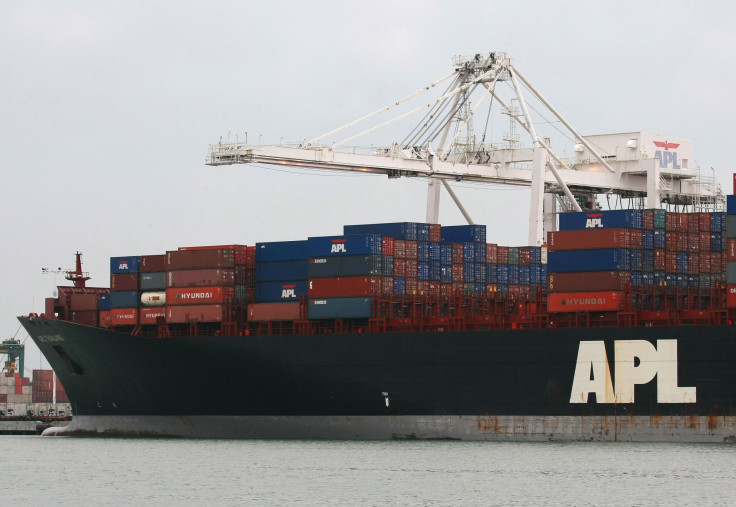US Will Clock 2.6% Growth In 2019, Global Economies Will Weaken Further: IHS Markit

The U.S. economy will show strength in 2019, clocking a modest growth of 2.6 percent, as it benefits from the tax cuts and spending increases of the previous year, but other major economies will see growth slowing further -- continuing on the divergent trend seen last year.
Nariman Behravesh, chief economist at IHS Markit, said in a note that the fundamentals of the U.S. economy remained fairly solid, with estimates pointing toward sustainable growth in labor force and productivity. He expects the U.S. economy to grow at a 2.6 percent annualized rate this year. The economy grew 2.9 percent in 2018, compared with only 2.2 percent in 2017.
“The acceleration was almost entirely due to a large dose of fiscal stimulus (tax cuts and spending increases) put in place at the beginning of the year. The impact of this stimulus will still be felt in 2019, but with diminishing potency as the year progresses,” Behravesh said.
IHS Markit said the U.S. economy will face pressures in the form of weakness in the housing market, strength in the dollar, tightening credit conditions and higher tariffs. “The economy will find support in lower interest rates (at least by recent historical standards), fiscal stimulus that is still aiding growth and lower oil prices,” it said.
IHS Markit sees policy mistakes as the biggest threat to global growth in 2019 and beyond. The effect of major fiscal stimulus unveiled by the U.S. will fade, leaving the world’s largest economy with “a legacy of trillion-dollar annual budget deficits as far as the eye can see - and steadily rising debt levels. This means that the United States will have very little room for fiscal stimulus when the economy next goes into recession,” IHS Markit said.
The U.S. Federal Reserve’s monetary policy this year is expected to be more dependent on the incoming economic data, estimates of the “neutral” federal funds rate, and the implications of a (partially) inverted yield curve, IHS Markit said.
Majority analysts polled by International Business Times expected the Fed to reduce the number of rate increases in 2019.
“Given weaker growth and muted inflationary pressures, however, the pace of removing accommodation is likely to be even more modest than previously expected,” it said. IHS Markit expects three interest rate increases in 2019 and one in 2020.
IHS Markit sees a modest increase in U.S. core personal consumption inflation -- the Fed's preferred measure of inflation for which it has a target of 2 percent -- at 2.1 percent this year from 1.8 percent in 2018.
The U.S. dollar is expected to continue to hold at current elevated levels for much of 2019. “Continued above-trend U.S. growth and more rate hikes by the Fed, compared with most other central banks, are the primary reasons for this expected strength,” IHS Markit said.
The strength in the U.S. dollar, along with weaker global growth and gradual tightening of credit conditions, will continue to see volatility in commodity markets and pose significant downside risks.

GLOBAL ECONOMIES FACE HEADWINDS
While the global economy started strong in 2018, the momentum faded as the year advanced. Fiscal stimulus in the U.S. helped the economy grow; however, growth in other economies including the euro zone, United Kingdom, Japan and China began to weaken. IHS expects this divergent trend to continue in 2019. Growth in Europe, Japan, China and emerging markets will likely decelerate in 2019 and decline further in 2020.
“IHS Markit predicts that global growth will edge down from 3.2 percent in 2018 to 3.0 percent in 2019 -- and will keep decelerating over the next few years,” Behravesh said in the note.
IHS Markit expects expansion in Europe to slow further. Euro zone growth will slip to 1.5 percent in 2019, and decline to 1.2 percent in 2020. Growth in the euro area has been trending down since peaking at 2.5 percent in second half of 2017. It was 1.9 percent last year. Less accommodative credit conditions, global trade growth and political risks, including uncertainty surrounding Brexit were marked as main factors for the deceleration in growth in the region.
Japan’s recovery will remain weak, IHS said in its note. Growth will likely hold close to a rate of 0.9 percent in 2019, before slipping to 0.5 percent in 2020. “The expected rise in construction spending ahead of the 2020 Olympics will sustain growth in 2019, but the boost will fade by the end of the year,” the note said.
Growth in China will continue to edge lower to 6.3 percent in 2019, before declining further to 6 percent in 2020. China’s real GDP in the third quarter 2018 was 6.5 percent on a year-on-year rate -- the lowest since the financial crisis.
While several monetary and fiscal measures have been taken by the Chinese authorities to support the economy during the ongoing trade war, IHS Markit said the measures are likely to remain modest.
“Credit growth will continue to be constrained by the massive debt overhang and the government’s commitment to deleveraging -- at least in the medium-to-long term. On the other hand, the government’s stimulus efforts may well become more aggressive if the trade tensions with the United States (re)escalate and growth is seriously damaged,” IHS Markit said.
Growth in the emerging world has topped out, IHS Markit said, adding growth in the region will slide to 4.6 percent in 2019. Growth among the emerging market countries edged lower to 4.8 percent in 2018, after growing at 4.9 percent in 2017.
IHS expects emerging markets to face a number of headwinds in 2019. “First, growth in the advanced economies (about 60 percent of world GDP) is slowing -- as is the pace of world trade. Second, global financial conditions are getting gradually tighter and the dollar is expected to remain strong. Third, commodity prices will remain volatile and could be trending down over the next year. Last, but by no means least, rising political uncertainty in countries such as Brazil and Mexico could scare away foreign capital inflows. A few countries will be able to buck these trends -- especially dynamic economies with low levels of debt -- notably in Asia,” IHS said in its note.
© Copyright IBTimes 2024. All rights reserved.




















